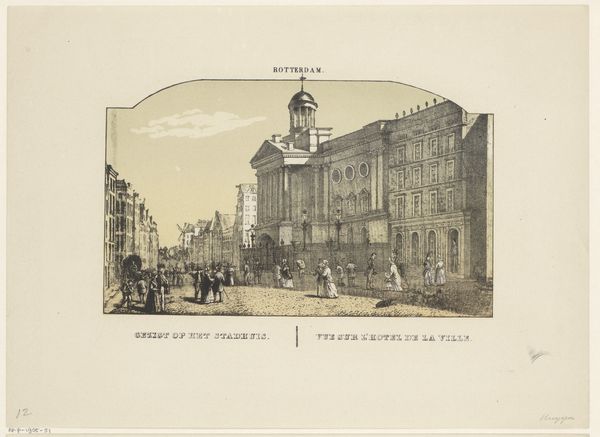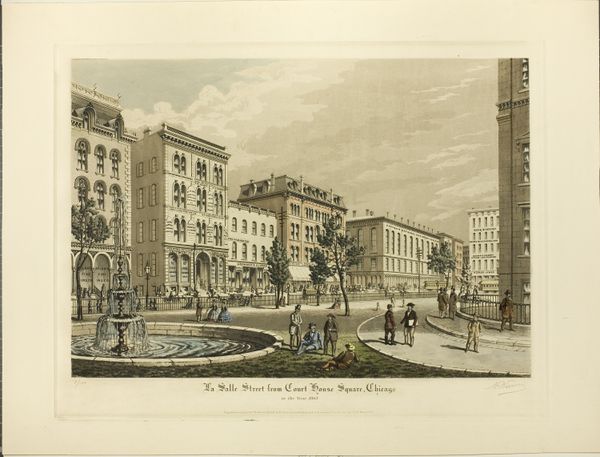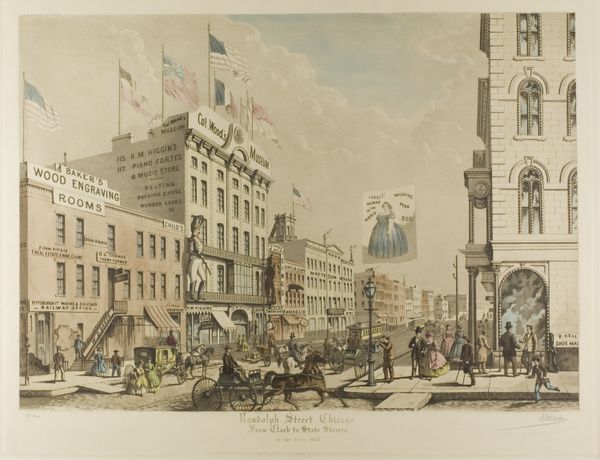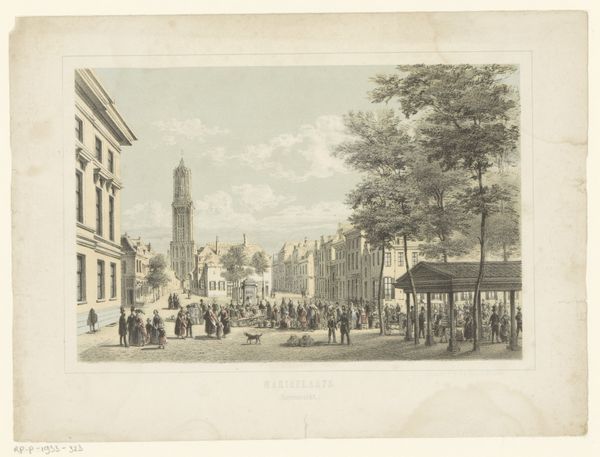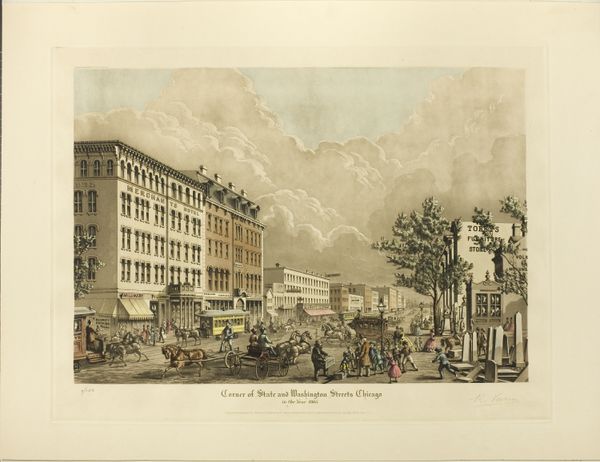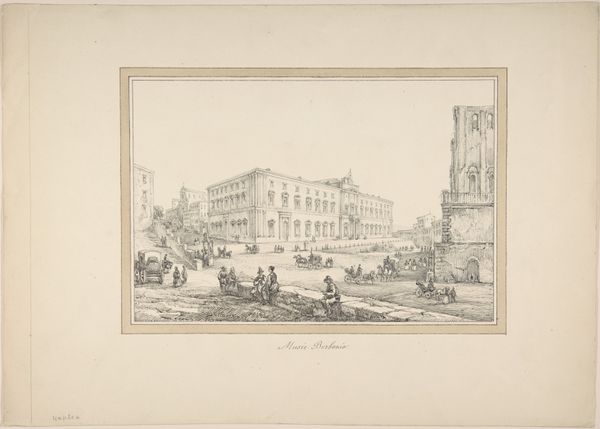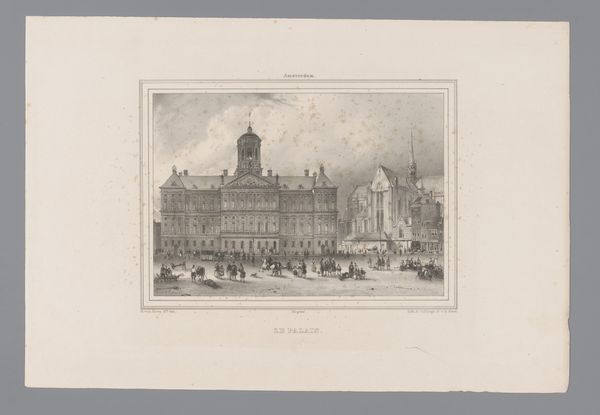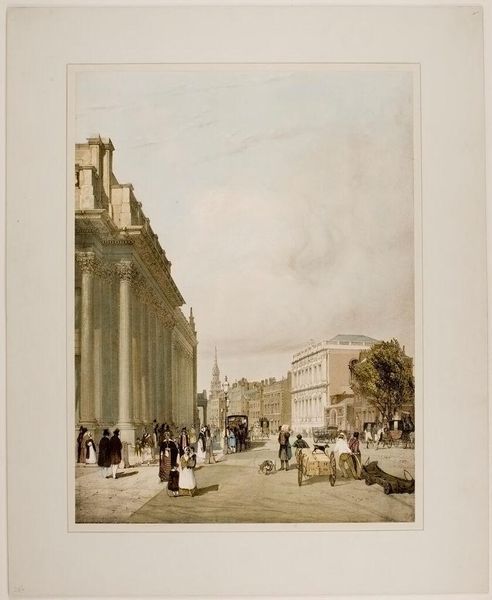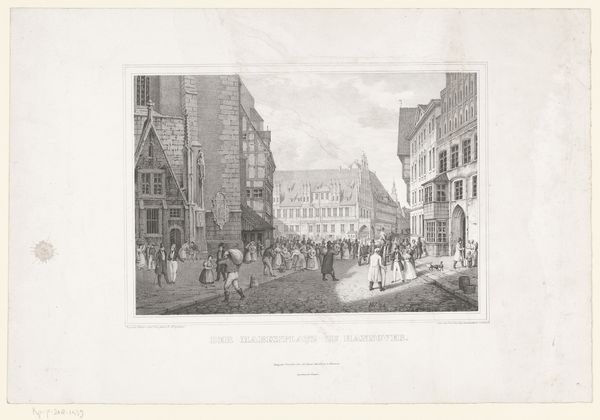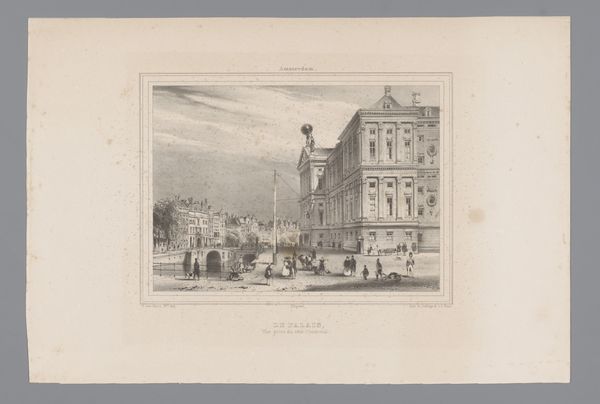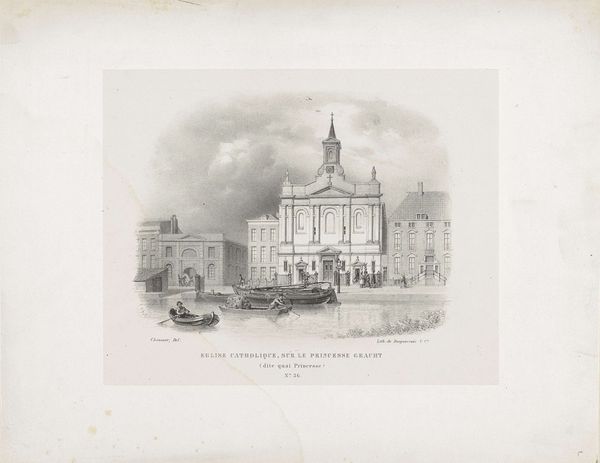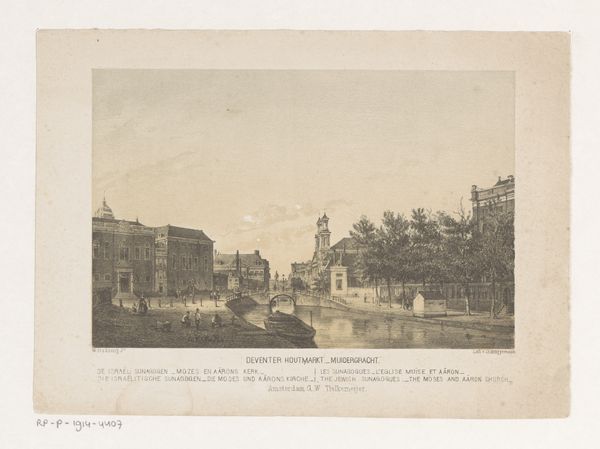
N. W. Corner of LaSalle and Randolph, Chicago, Showing Court House Square in the Year 1864 c. 1928
0:00
0:00
drawing, print, etching, paper, architecture
#
drawing
# print
#
etching
#
etching
#
paper
#
cityscape
#
architecture
#
realism
Dimensions: 383 × 541 mm (image); 450 × 592 mm (plate); 543 × 710 mm (sheet)
Copyright: Public Domain
Editor: So, here we have Raoul Varin's "N. W. Corner of LaSalle and Randolph, Chicago, Showing Court House Square in the Year 1864," made around 1928. It's an etching on paper. The level of detail is incredible. What particularly stands out to you about this cityscape? Curator: Well, I am fascinated by the materials used, particularly the etching. Think about the process: the labor involved in creating such detail, transferring that scene of urban life onto a copper plate, using acid to bite into the metal. It's a kind of industrial craft. And the paper itself, what kind was it? Was it mass-produced or something finer? How does that influence its perceived value? Editor: That's a good point; the etching process feels almost… democratic. Prints made it more accessible. Curator: Exactly! How many copies were made? Who was able to afford it? This wasn't just about aesthetics; it was about production, labor, consumption, and how those intersected in the Chicago of the late 1920s looking back at its earlier days. Did the artist have to make compromises due to time constraints, access to tools, market demands, and availability of paper? How does this medium inform its subject matter? Editor: It makes me wonder about the relationship between the 'high art' of architecture depicted and the craft involved in creating the image. Curator: Precisely. Was Varin intentionally blurring those lines, elevating a supposedly 'low' craft to document a pivotal moment in Chicago's history? We also might consider if the materials and techniques employed subtly critique or celebrate the city’s economic growth during the gilded age. The material context profoundly shapes the artwork. Editor: That’s a different way of approaching it than I had thought of, focusing on materials rather than just the image. Curator: That's what makes it interesting, isn't it? There’s value in looking beyond the surface. Considering materials informs its role in a social setting and historical context. Editor: I’ll definitely be paying closer attention to materials going forward. Thank you.
Comments
No comments
Be the first to comment and join the conversation on the ultimate creative platform.
